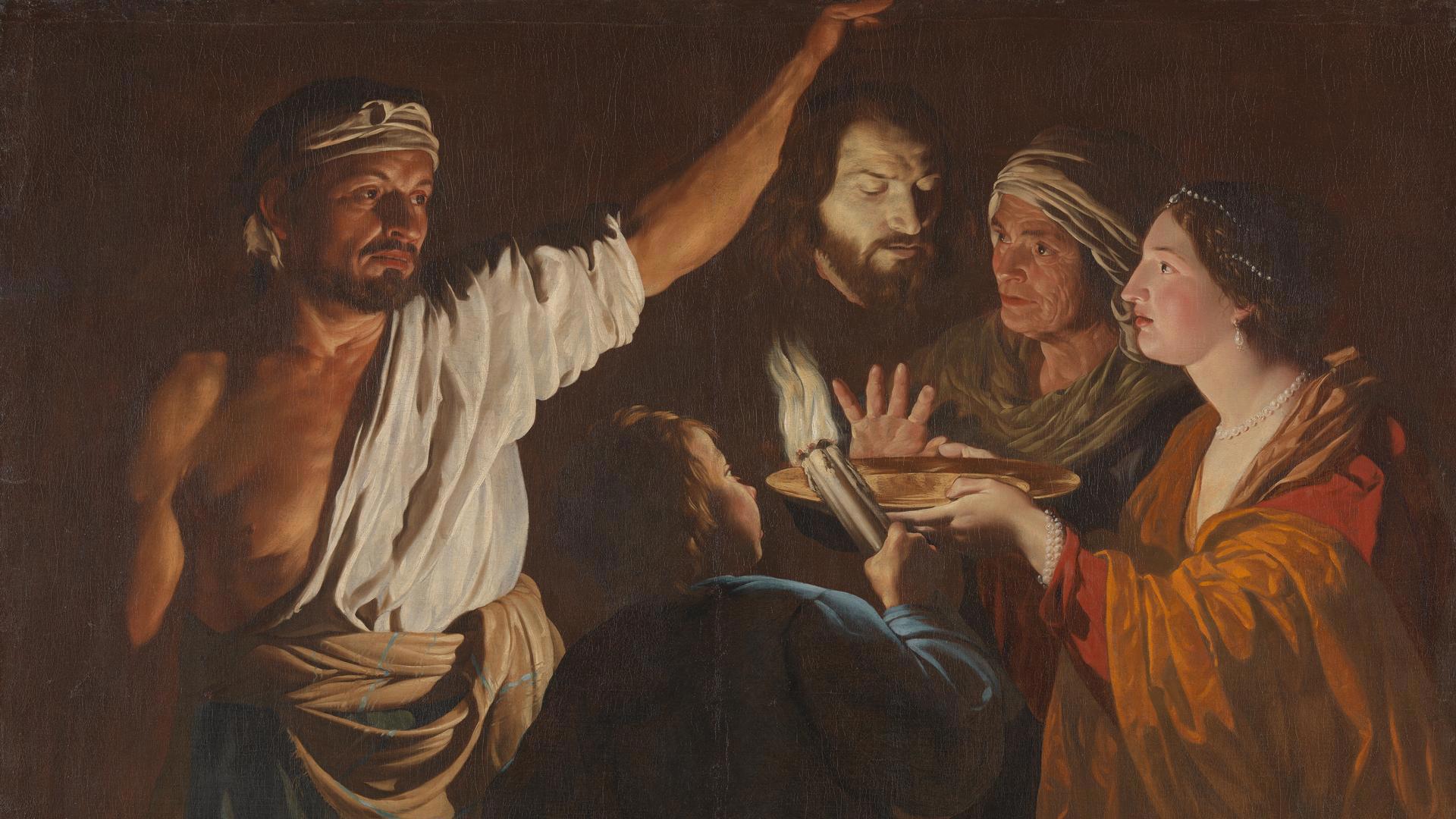The beheading of John the Baptist is one of the most solemn passages in the Gospel. His head is served upon a platter of silver in the midst of a feast of corruption, and the disciples take away his body in silence. Within this tragedy unfolds a mystery of Light. John himself had said, “He must increase, but I must decrease” (John 3:30). The prophet recognises his lunar vocation; he is a mirror that reflects and diminishes, giving way to the Source. His voice in the desert is a prelude, his life a preparation, and his death a drama of the Moon setting so that the Sun may rise.
The Gospels reveal John as the friend of the Bridegroom, the one who rejoices at the sound of his voice. His ministry is baptism in water, cleansing of conscience, waiting for the One who will baptise in Fire and Spirit. He belongs to the night and to the silver light, prophetic and Gabrielic. When his head is brought on a dish of silver, it is a lunar image: the face of the prophet mirrored in metal, silent and round, like the Moon cut from the body of the world. This image does not only signify cruelty; it is also the sign of a cosmic passage, a liturgy in which the lesser light yields to the greater.
I. The Moon and the Decreasing Light
John is presented in the Gospel of John as the man sent from God, “He was not the Light, but came to bear witness of the Light” (John 1:8). The Moon has no radiance of its own; it reflects, it announces, it wanes so that the cycle of night leads into dawn. John is this lunar prophet, standing at the river between wilderness and promise, baptising with water, speaking of one who comes with fire. His confession is the confession of the Moon itself: that it does not reign in the day, that its glory is to fade.
The words “I must decrease” are the scriptural seal of the waning Moon. The Baptist diminishes in influence, his disciples move towards Jesus, his voice is stilled. As the lunar cycle approaches the dark phase, the silence of John prepares for the full unveiling of the Sun. His imprisonment is already the occlusion of the Moon, a phase where light grows faint. The beheading is the balsamic end, the cut of the orb from the sky, the silver disc served at a table where no blessing is spoken. However, even in this profanation, the image contains its mystery: the Moon has given its full measure; now the Sun will ascend in splendour.
II. The Central Pillar and the Two Lights
The Kabbalistic tree sets the Sun in Tifereth, heart of the pillar of balance, and the Moon in Yesod, the foundation of reflection. Above both shines Kether, crown of divine presence, radiant with Metatron; below, Malkuth gathers the four elements, guarded by Sandalfon. The drama of John and Jesus is a drama along this central axis. John is the Yesod, the reflector, the prophet of Gabriel who speaks with the voice of the Moon. Jesus is the Tifereth, the Logos incarnate, the radiance of the Sun.
Thus the beheading, so brutal at the level of flesh, becomes a passage from lunar reflection to solar revelation. John the Baptist is the caput mortuum, the head separated, image of the residue that prepares the stone. The Sun rises not against the Moon, but through its decrease. The drama is one of succession, where prophecy yields to fulfilment, where witness fades into the voice of the Bridegroom himself.
III. The Voice, the Silence, and the Fulfilment
The Gospels insist that John is the voice, “The voice of one crying in the wilderness” (Isaiah 40:3, John 1:23). Voice is always transient; it prepares and vanishes. The Word, however, abides. The difference between John and Christ is the difference between the cry and the Logos. The decapitation is the literal silencing of the voice, and that silence is itself testimony. In losing his head, John points to the head of the Body, Christ who is risen.
The platter of silver is a mirror of Yesod; the Sun is waiting at the horizon. John, the friend of the Bridegroom, recedes, his joy complete. His blood consecrates the passage; his silence opens the space. “After me comes a man who ranks before me, for he was before me” (John 1:30). The voice has accomplished its work; the Logos begins his. The lunar prophet has waned; the solar Christ now rises, clothed with light.
Fiat Lux.
